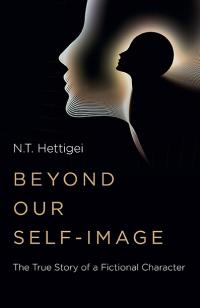
The Last Mystery of World War Two
An article based on the exciting new book
In the Shadows of Enigma
by Alex Rosenberg / www,tophat-books.com
The wizard war is what Churchill called the technological competition between the combatants of the second world war. It was an “arms race” before the nuclear arms race. It wasn’t just the race for the atom bomb between Germany and the western allies. In fact it wasn’t even mainly that. More important might have been the way the RAF and the Luftwaffe played secret radar tricks on one another right through the war. Then there was jet engine technology, a competition the Germans won despite a British head start. There were other German surprises, including the V-1 cruise missile, the V-2 ballistic missile, and the snorkel submarine that could remain submerged practically indefinitely. Every one of these developments were the result of top secret projects. And yet every one of the them was “outed” one way or another in the immediate post-war years. All but one.
Some of these secrets were difficult to hide of course, like rockets and jet planes. Then, at the end of the war both the western allies and the Russians got their hands on as much of the hardware and as many of the German scientists and engineers who worked on them as they could.The Americans and Brits even had code-names for these well-prepared missions—Lusty for the jet planes, Operation Backfire and Paperclip to sweep up the German missile scientists and their work. The Russians scoured Germany for weapons scientists and engineers too, taking everybody they could get their hands on. Everything the Soviets and the Americans did in the first years of the space race was based on the secret German work. The early rockets both sides made turned out to look just like the German’s V-2s. It was no accident.
It didn’t take long for the atom bomb secrets to get out either. Spies like Klaus Fuchs, a German refugee working for the British atom project, and several Americans, managed to get some of the solutions to the difficult problems of atom bomb building to the Russians during and immediately after the war. The Soviet Union tested its first A-bomb almost exactly 4 years after the Americans dropped their bombs on Japanese cities.
No matter how secret during the war, everything came to light, one way or another, almost immediately afterward. Except for one. It was a secret so big that when it came out 30 years later, the whole history of world war two had to be rewritten. What’s more at least 8,000 women working in one place—Bletchley Park--knew some or all of the secret. And it still didn’t come out. That’s the last mystery about the last mystery of world war two. And the best guess about why it remained secret for so long afterwards may tell us something new about what happened after the war, perhaps even why there wasn’t a third world war fought across the European continent or across the skies between the USA and the USSR.
The secret that never came out, that was never revealed until the 1970s was that the western Allies had broken the impenetrable German ENIGMA code. Reading top secret radio traffic right through the war enabled the Brits and then the Americans to outwit the German Wehrmacht, Luftwaffe and Kriegsmarine over and over. You’d think the intelligence triumph of code breakers like Alan Turing, a triumph so many others participated in, would be as proudly hailed as any other achievement. But no. Why?
The secret could have leaked out a hundred different ways.
During the 1930s Polish mathematicians managed to get their hands on a German cypher machine, called an Engima, and begin breaking into coded signals the German military was sending. A month before the German attack on Poland that began the Second World War, Polish intelligence passed on to the British and French their techniques and the hardware they had devised to break the German codes.
Developing this work, the British began to successfully decrypt the increasingly complex coded radio traffic of the German Luftwaffe, then the Wehrmacht, and intermittently the German submarine forces. Much of this work was carried out at Bletchley Park, an estate in Buckinghamshire requisitioned during the war. As the Germans improved their coding techniques, Alan Turing, working at Bletchley Park, developed the first digitally programmable computers to continue to provide decrypts to the Allied military command.
By 1945, some 8,000 women, worked in Bletchley Park, were deciphering coded German military signals. When the war ended in that year all the participants in this work were enjoined to secrecy, on pain of prosecution under the British Official Secrets Act, with a maximum sentence of fourteen years for each violation.
Over the next twenty-nine years, until 1974, the secret was kept. Then, suddenly, it was revealed, by the Polish officers who passed the original Enigma machine they’d stolen. Not one of the thousands of participants in the work at Bletchley divulged the secret, even as every other secret of the war—nuclear weapons, ballistic missiles, submarine technology, jet engines, radar-- was leaked, disclosed to the public, or revealed by espionage.
The only secret the western Allies’ managed to keep was the successful decoding of Enigma. That secret was kept for thirty years after the war. When it was finally revealed in 1974, much of what had been written about the Second World War had to be substantially revised, including all the official histories published by the Allied governments—Britain, The United States, Canada, Australia, and New Zealand.
Why keep this one secret, and for 30 years? And why keep secret even now why it was kept secret so long?
Here’s a guess, and some evidence for it.
The Russians took everything of possible military use (and a great deal more) from prostrate Germany in 1945. They must have taken the Enigma machines and all the code books too. They’d never broken the German cypher. Surely they thought the code unbreakable and so began using it themselves.
That would have given the British and American intelligence services continuing access to the most secret military decisions the Soviets made, from before their blockade of Berlin in 1948 all the way to the day in 1974 that their cover was blown by the surviving Polish officers who’d passed one of the Enigma machines on to Britain back in 1939.
Everyone in Europe anticipated a land war in ’49 after the Russians cut off Allied access to Berlin. Instead there was an airlift. Then in 1951 in Korea the US didn’t use atom bombs. In 1956 NATO didn’t start a land war when the Soviets invaded Hungary. Though US and Russian tanks faced each other in Berlin several times in the ‘60s, cooler heads prevailed. In 1962 the American blockage over missiles in Cuba seemed to bring the world to the brink of war. But in the end conflict was averted. When the Russians occupied Prague in ’68 and the Americans bombed Hanoi in 1972, somehow, no one ever stumbled across the trip-wire into catastrophic nuclear exchange.
Why?
Restraint? Weakness? Irresolution? Luck?
Maybe our side was reading the other side’s intentions accurately enough and “in real time” to navigate those dangerous currents adroitly, minimizing risks and maximizing outcomes? That would explain a run of luck that surprised many of our parents who didn’t expect to live through three decades without a nuclear Armageddon.
Maybe the German Enigma code lost them the war and won everybody a large chunk of the peace for the next 30 years or so.
Alex Rosenberg is a professor of philosophy at Duke University, North Carolina, and he has written extensively in this field, most notably his 2011 book, The Atheist's Guide to Reality which was widely reviewed in the NY Times, New Republic, The Atlantic and more. As a novelist, Alex is the author of two historical thrillers, The Girl From Krakow and Autumn in Oxford. The Intrigues of Jennie Lee was his first novel from Top Hat Books.
READ IN THE SHADOWS OF ENIGMA TODAY!
In this standalone sequel to The Girl From Krakow, the greatest undisclosed secret of the Second World War haunts the lives of four people across three continents and fifteen years.
The only Second World War secret not revealed soon thereafter was that the Allies had broken the German Enigma codes.
This secret was kept for 30 years after the war. In the Shadows of Enigma is a 15 year-long narrative of how knowing the secret changed the lives of four people: Rita Feuerstahl, who learned that the German Enigma had been deciphered by the Poles just before she escaped a Polish ghetto, Gil Romero, her prewar lover whom Rita marries after the war, Stefan Sajac, the infant son Rita had smuggled out of the ghetto and lost track of, and Otto Schulke, the German Gestapo detective who apprehended Rita during the war and suspected that she knew the secret of the Enigma’s decoding.
Also from Alex Rosenberg
The Intrigues of Jennie Lee
A series of political and intimate intrigues turn history into thriller when Jennie Lee, elected to parliament aged just twenty-four, five years too young even to vote in 1929 Britain, has the chance to radically change the course of history...
A gripping and evocative story of love, politics, betrayal and bravery, which reimagines events of the interwar years.
Jennie Lee was elected to parliament aged just twenty-four, five years too young even to vote in 1929 Britain. From the Labour backbenches, she hurled barbs and bolts of thunder at the likes of Winston Churchill, Lady Astor, even her own party’s Prime Minister, Ramsay McDonald.
The novel intertwines real events with a personal story involving Elizabeth Bowes-Lyons, the future Queen Mother; the womanizing fascist Oswald Mosley; the Great War prime minister Lloyd-George; and the radical Labour MP Aneurin Bevan.
A series of political and intimate intrigues turn history into thriller when Jennie has the chance to radically change the course of history for Britain, Europe and the world.
'...marvellous in so many ways… An excellent take on the twisted, dangerous politics of 1930s Britain and a rattling good read.' C.J. Sansom, author of Dominion and the Shardlake mysteries
The Nazis’ rise to power and its campaign to rid Germany of the mentally ill.
READ NEXT
Categories:
0 comments on this article



















